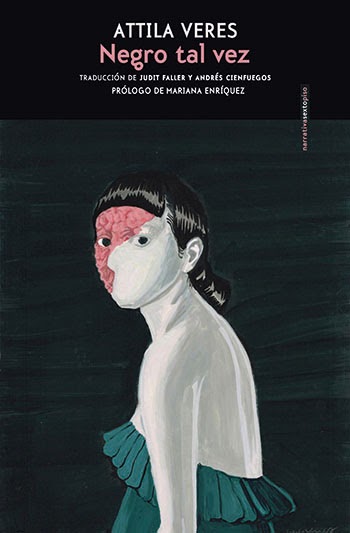
Me, black maybe I liked it quite a bit. Ultimately, the quality of the twelve stories compiled is, in general, remarkable, and the anthology has a certain cohesion thanks to the similarities in genre, style and theme, as well as its inclination towards black humor.
Let’s analyze these stories one by one:
In “Bite a Dog”, a young man discovers that his girlfriend is dedicated to assaulting dogs and that, if he wants to keep her, he must do the same. It is simple but powerful, and addresses the obliquity of relationships and the contemporary mentality that you are either a hunter or you are a prey from moderately original angles.
“City of Fog” makes us read a meticulous blog entry that pursues two ineffable mysteries: a book that never materialized and an elusive underground band whose existence is impossible to prove one hundred percent. It is surprising for the solvency of its billing (especially taking into account the ambition of its format) and for the creativity of its premise.
“The Time Left” is about children who want to prevent their stuffed animals from dying or suffering, but they only complicate things. It has an ingenious premise and addresses the childhood inability to understand death and cope with mourning through a curious prism. Still, it could have gotten a lot more out of its ambiguity and unreliable narrator.
“It’s not a mammal” is about a man and the relationship he establishes with his neighbor. It is far from round; In fact, it presents many ingredients that it does not know how to integrate organically into the whole. Even so, its uncomplicated development and its extravagant ideas help it work as weird entertainment without great pretensions.
“Back to the Midnight School” flies over a small town that is dedicated to cultivating a strange plant, and a young man from the city who tries to integrate into it and overcome the death of his parents. It exudes imagination and has a suggestive abstract vocation; However, for my taste it is a little longer than necessary.
“We’ll sleep in the snow” makes us accompany a couple whose spa vacation turns into a real nightmare, probably because the protagonist has seen an engagement ring and doesn’t want to receive it. It has a successful delirious atmosphere and disturbing imagery.
“Multiply by zero” takes us on an office worker’s journey to a country ruled by primal entities and the religions that worship them, where blood sacrifices, disappearances and paranormal phenomena are common. It has brilliant moments and redoubles the black humor that permeates the volume. However, it seemed unnecessarily long to me, it fails to give the same level of creativity and verisimilitude to its format as “City of Fog” and it moves away from the criticism of mass tourism or Lovecraftianism that it initially promised so much.
In “The Ámbar Complex”, an eccentric winemaker invites a few people to a tasting of drinks that cause hallucinatory effects to those who consume them. It begins effectively as an imitation of the best dirty realism and gradually introduces strange concepts. Likewise, his tangential references to “City of Fog” and “It’s Not a Mammal” made me smile.
“The Blood-Colored Machine” presents us with a world consumed by absurdity, and an unnamed narrator who worships (as well as fears) a sinister and cruel “protective gear” that isolates his former city from the prevailing horrors. . It reflects on the dire future that awaits us, mixing elements of dystopian fiction with the imagination of creepypastas.
“The sky full of crows, and then nothing at all” tells how a heavy metal musician in decline refuses to give in to the demon who urges him to “occupy the place that was destined for him on the Midnight Throne and from there lead the army of the dead against the world. It is a true delight that has captivated me with its packaging, lyricism and narrative voice. His tender investigation into losers and life failures are illustrated through a very original argument.
In “It is among you”, the worshipers of a Lovecraftian religion have to make concessions so that their faith is accepted by the rest of Hungarians. The chronological disorder and the large cast do not prevent the story from being read fluently.
“Black Maybe” tells how a family of urbanites settles for a few days in a rural town to help the farmers who host them, imitate their lifestyle and revive traditions. It’s satisfyingly compact. Although it abounds in descriptions of bizarre harvests and strange rituals, like “Back to the Midnight School”, it does not dwell on them as much, making them more suggestive and leaving room for other sections.
Summing up: black maybe is an anthology that will delight lovers of horror (whether psychological, rural or cosmic), the fantastic, the weird, the dark and the caustic. All the stories he compiles are, to say the least, effective; some are remarkable, and others even border on genius. Only for gems like “City of Fog”, for me an instant classic, or the story that gives its name to the volume, is it worth discovering the universe of Veres.
Source: https://unlibroaldia.blogspot.com/2024/10/attila-veres-negro-tal-vez.html


